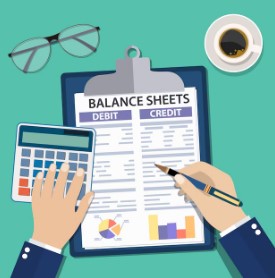
The math behind the balance sheet
Getting to Know the Balance Sheet Statement: The math behind the balance sheet
The balance sheet tells us about the company's assets, debts, and owners' equity. As you know, the P&L statement talks about how profitable the business was during the given fiscal year. That's why it's correct to say that the P&L statement stands alone. Balance sheets, on the other hand, are made on a flow basis, which means they include financial information about the company from the moment it was formed. In other words, the P&L shows how well the business did during a certain fiscal year, while the balance sheet shows how its finances have changed over time.
The total assets and debts of a business should equal each other on a normal balance sheet. Because of this,
Assets = Liabilities
People also call the above equation the accounting equation or the balance sheet equation. This equation actually shows the most important thing about the balance sheet: it should always be fair. For example, a company's assets should be equal to its debts. The reason for this is that all of a company's assets must have been bought with either the owner's cash or debt.
The gap between the assets and debts is the owners' capital. It's also known as "Net worth" or "Shareholders Equity." Putting this into the form of an equation:
Shareholders equity = Assets – Liabilities
|
Table of Contents: Getting to Know the Balance Sheet Statement |










Post Comment